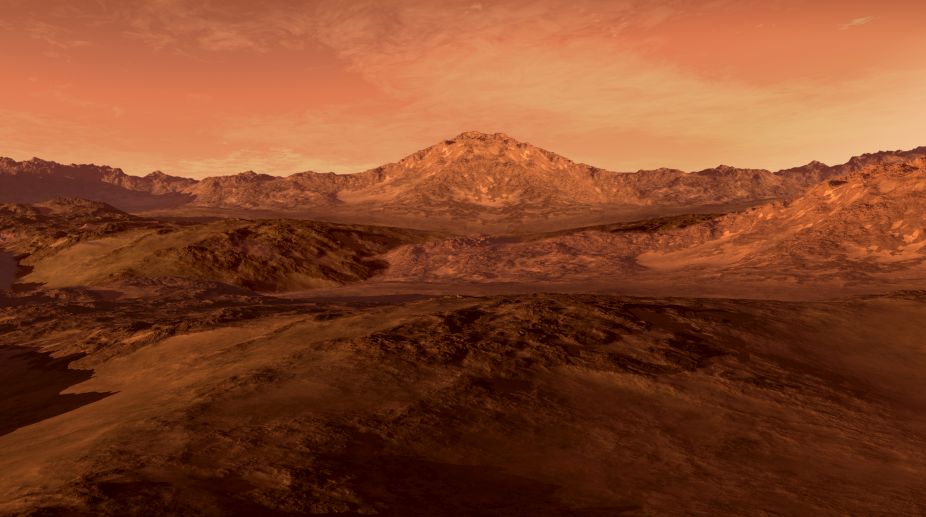Ancient Mars had flowing water much longer than previously believed, suggests pale zones called "halos" with high concentration of silica on the Red Planet.
The halos were analysed by NASA's Curiosity Mars rover's science payload, including the laser-shooting Chemistry and Camera (ChemCam) instrument, developed at Los Alamos National Laboratory in conjunction with the French space agency.
"The concentration of silica is very high at the centrelines of these halos," said Jens Frydenvang, a scientist at Los Alamos National Laboratory in New Mexico and the University of Copenhagen in Denmark.
"What we're seeing is that silica appears to have migrated between very old sedimentary bedrock and into younger overlying rocks," Frydenvang, lead author of a paper published in the journal Geophysical Research Letters, said.
The goal of NASA's Curiosity rover mission has been to find out if Mars was ever habitable, and it has been very successful in showing that Gale crater once held a lake with water that we would even have been able to drink, but we still don't know how long this habitable environment endured.
"What this finding tells us is that, even when the lake eventually evaporated, substantial amounts of groundwater were present for much longer than we previously thought – thus further expanding the window for when life might have existed on Mars," Frydenvang said.
The elevated silica in halos was found over approximately 20 to 30 metres in elevation near a rock-layer of ancient lake sediments that had a high silica content.
"This tells us that the silica found in halos in younger rocks close by was likely remobilised from the old sedimentary rocks by water flowing through the fractures," Frydenvang said.
Specifically, some of the rocks containing the halos were deposited by wind, likely as dunes.
Such dunes would only exist after the lake had dried up. The presence of halos in rocks formed long after the lake dried out indicates that groundwater was still flowing within the rocks more recently than previously known, the study said.
Curiosity has travelled more than 16 km over more than 1,700 sols (martian days) as it has traveled from the bottom of Gale crater part way up Mount Sharp in the center of the crater.
Scientists are using all the data collected by ChemCam to put together a more complete picture of the geological history of Mars.










